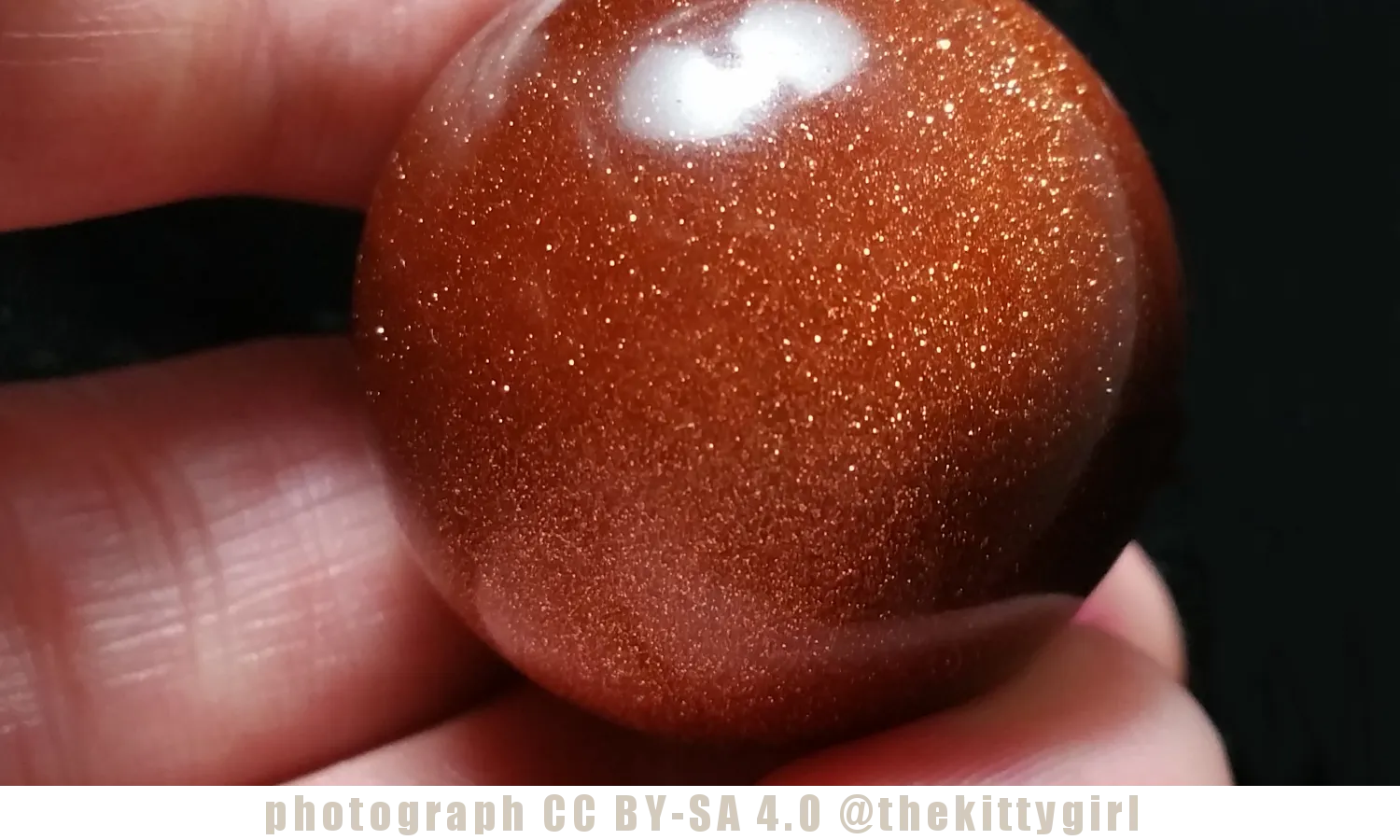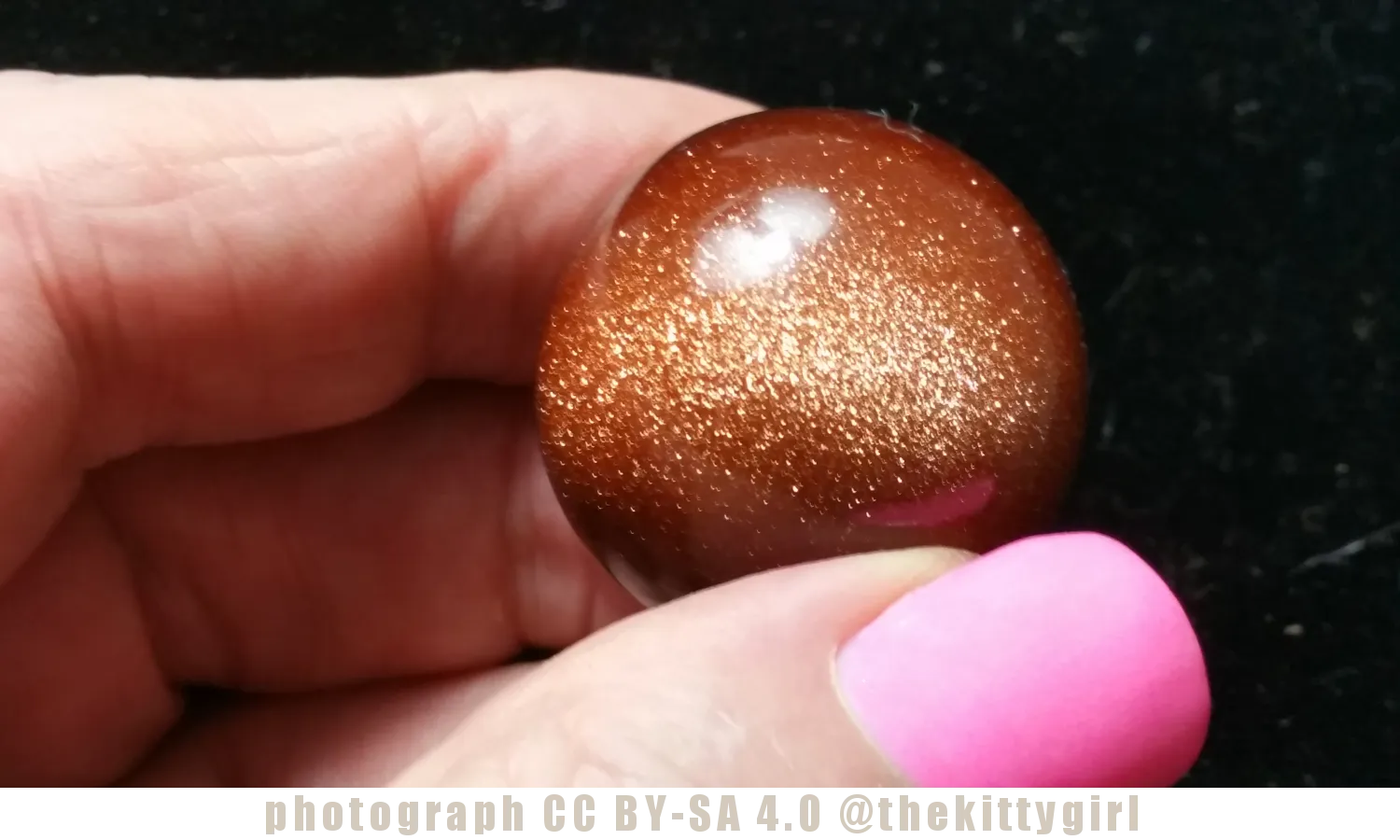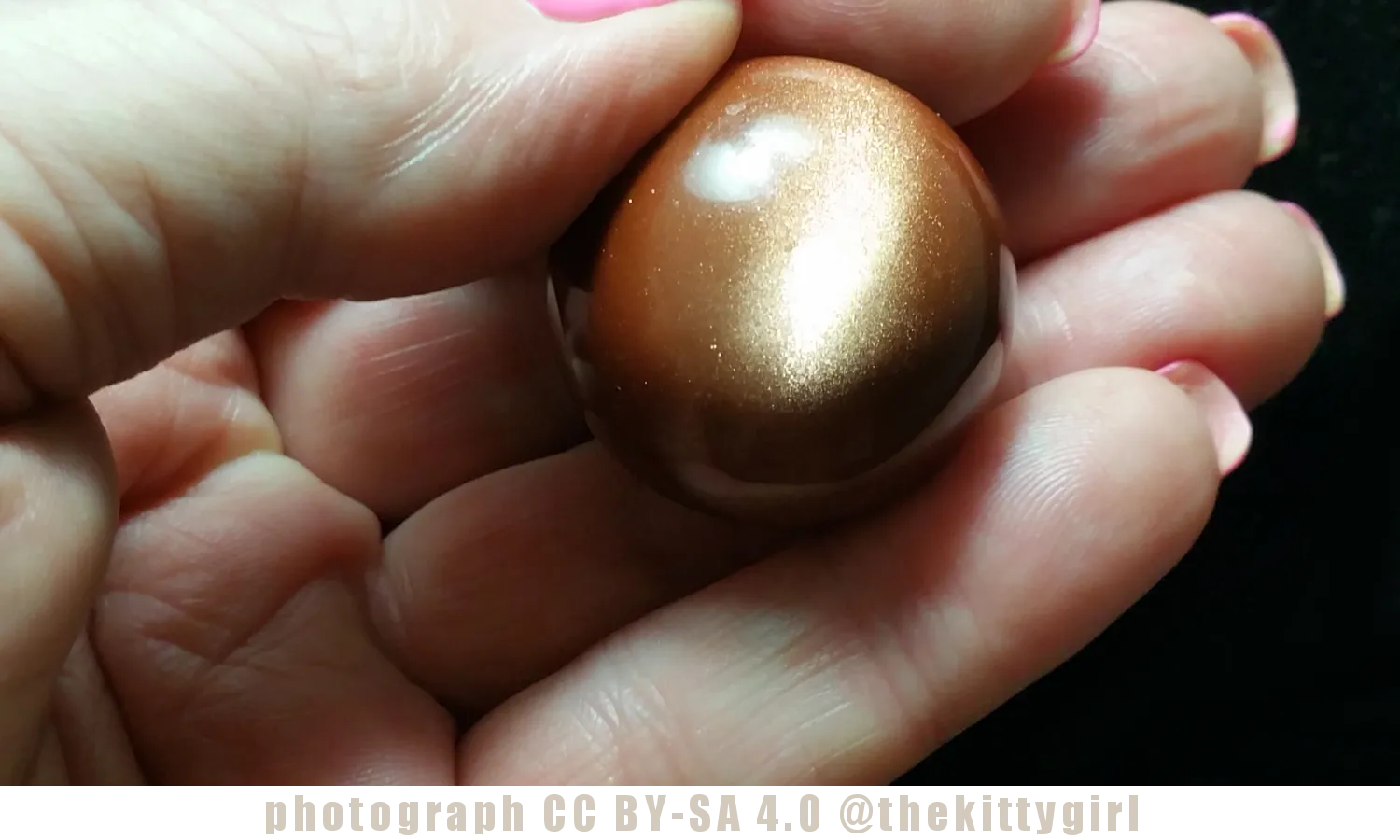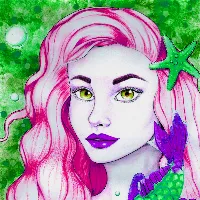In my last post, I wrote about aventurine which is a naturally-occurring rock composed of amorphous quartz and a bit of fuschite. It also contains a small amount of mica that makes it sparkle under light.
There is a man-made "gem" that simulates aventurine, but in different colors. It is known as goldstone (although some people call it "aventurine glass"). Legend says that goldstone was originally created by accident in Italy so was called: avventurina (from the Italian "avventura" or "by chance"). It is also suggested that only after this "aventurine glass" was invented that it lent its name to the natural stone at a later time, which is opposite from the way things usually work. [2]
Even though goldstone is a man-made material, it is still beautiful and quite fascinating to the eye! It's like holding an entire galaxy of stars in the palm of one's hand! So, how are these glittery little 'stars' formed...?

Copper oxide is added to molten glass, which is then heated to temperatures of around 2255°F (1235°C) so that the copper oxide melts completely. Then the mixture is cooled slowly and in an environment that is reduced of oxygen, this causing the copper crystallize within the glass mixture. Long, slow cooling times result in more crystals being formed. Each of the little 'sparkles' in the goldstone is an individual octahedral-shaped crystal of pure copper. In geometry, an octahedron is an eight-sided solid with each of the eight faces shaped like a triangle. If one uses a microscope, the triangular faces of the copper crystals can be seen. A photo of such can be seen on the geology.com website for anyone interested.

One of the most astounding things to me is this little tidbit:
The glass of reddish brown goldstone is colorless. Its reddish brown appearance is caused by reflections from the included copper crystals. [source]
Yet, when holding the goldstone in the hand and looking closely at it, it certainly appears to be a reddish-brown ball with golden flecks in it, not a clear piece of glass with a "color" that is mere illusion caused by reflections!

The other side (what I consider to be the "back" side) of the ball has some sparkles, too, but they are smaller and there is a bright line ("cats eye") chatoyancy that outshines the sparkles as seen in the above photo. I'm not sure what causes it, but I have seen it in other pieces of goldstone, too. Perhaps it is where a greater amount of the copper crystals have collected?

Cobalt, manganese, or chromium can be added in place of copper, resulting in blue, purple, or green goldstone. I've never seen the purple or green ones, just read about them. But the blue goldstone is gorgeous and I've held a piece of it a time or two — it is a beautiful, deep-indigo blue like the night sky with glittering stars. Even though my piece is reddish-brown instead of indigo-blue, it still feels like I am holding the Milky Way in the palm of my hand. 😁
SOURCES 1 Geology.com: Goldstone 2 Wikipedia: Goldstone

Aventurine • Amber • Black Star of India
Ruby – Part 1: Crystals • Ruby – Part 2: Jewelry • Larimar
Citrine Crystal • Amethyst Crystal • Kitty Geode • Phoenix Crystal
Barbeque
& Amethysts • Salt Lamps • Trilobite • Arrowhead
Garden Quartz, freeform • Granite Quarry № 2 • Apophyllite
Rocks from Space! • Quartz Rock: Raw versus Polished
Chrysocolla • Tourmaline • Bornite • Goethite • Small Quartz Crystal
Smoky Quartz • Tibetan Quartz • Amazonite Beads • Zoisite
Rutilated Quartz • Garnet • Amazonite Sphere • Lapis Lazuli Mala
Amethyst Point • How Rocks Get Their Color • Red Jasper
Ring, Ring! Amethyst Calling! • Lapis Lazuli • Turitella Agate




to learn more about either of these projects, please visit: @heyhaveyamet or @theterminal
19-Jun-2020
Return from Goldstone to 𝕜𝕚𝕥𝕥𝕪's Web3 Blog

